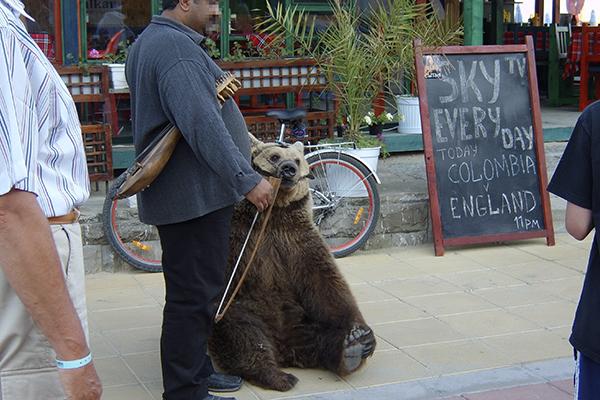Traditions - Dancing Bears

Shows with "dancing" bears have been widespread and still have some presence in different countries of Eastern Europe and Asia. In India, where this tradition was particularly strong in the Kalandars community, more than 400 bears were used and transported for years from village to village to perform. Today, thanks to an alternative process for achieving new sources of income for the local community, the practice has been eradicated.
It is an extinct tradition in places where it was still common (Albania, Bulgaria, Greece, India, Serbia, Turkey and recently Nepal), but it is still practiced in Pakistan.
Separated from their mothers when they are still cubs, bears have their snouts pierced with hot iron bars and without any kind of anaesthetic. As this is one of their most sensitive areas, the hole is used to control them by crossing a hook or a rope.
Moreover, their teeth and often their claws are removed to prevent bites and attacks.
The "dance" is their internalised reaction to the fear of the "training" they have been through. Forced to move on hot, shiny metal sheets, bears avoid this threat by standing on their hind legs and alternating the movements of their front legs, while music plays in the background. The constant repetition of this exercise makes the animals finally move automatically when the music is playing.
The continuous torture and mutilation they undergo prevents these animals from being returned to their wild state. For this reason, the different organizations involved in their rescue work in order to move them to zoos or sanctuaries.
.
